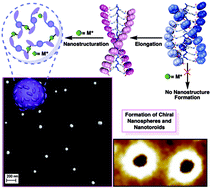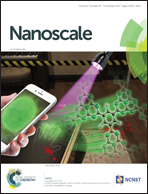The role of the secondary structure of helical poly(phenylacetylene)s in the formation of nanoparticles from polymer–metal complexes (HPMCs)†
Abstract
The great importance of the secondary structure (compressed/stretched) of helical poly(phenylacetylene)s (PPAs) in the formation of nanostructures (nanospheres and nanotoroids) by complexation with metal ions of diverse valences is demonstrated. PPAs bearing the same chelating units [anilide of (R)-methoxyphenylacetic acid] but displaying different helical scaffolds show great differences in their nanostructuration due to the different secondary structures of their helices despite the analogous ways in which their mono- and divalent metal ions form complexes. This key 3-D structural feature has not been taken into account previously when studying the nanostructuration of helical polymer–metal complexes (HPMCs).



 Please wait while we load your content...
Please wait while we load your content...